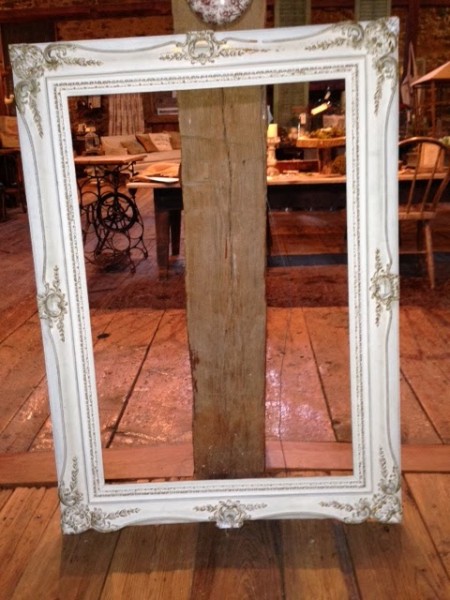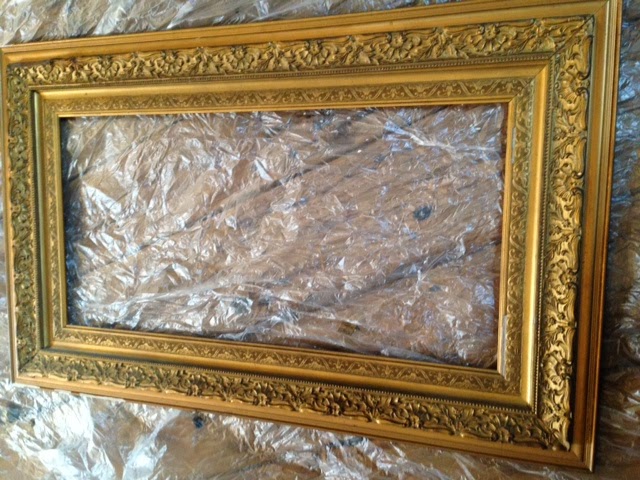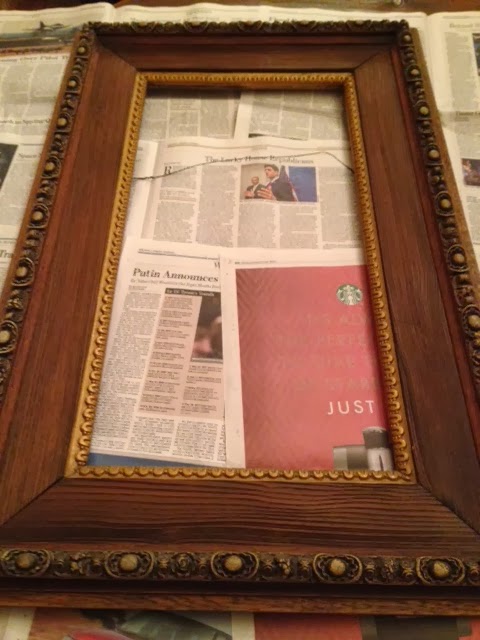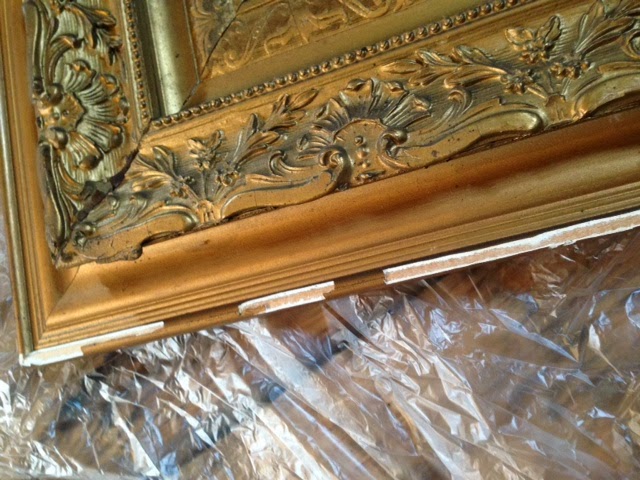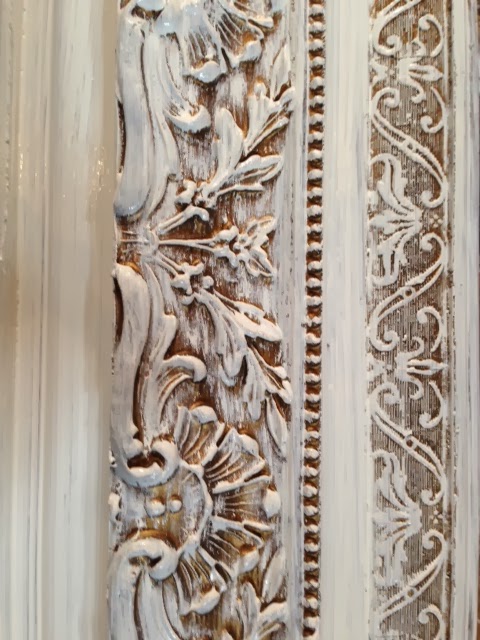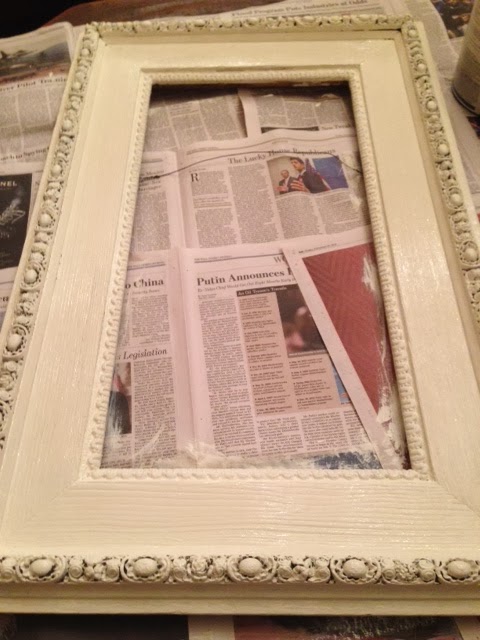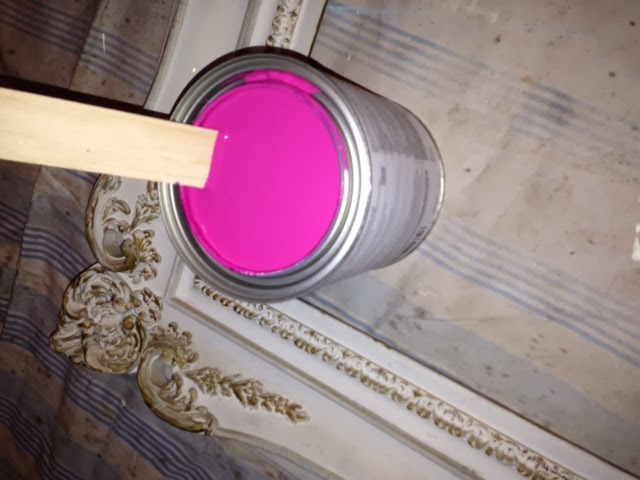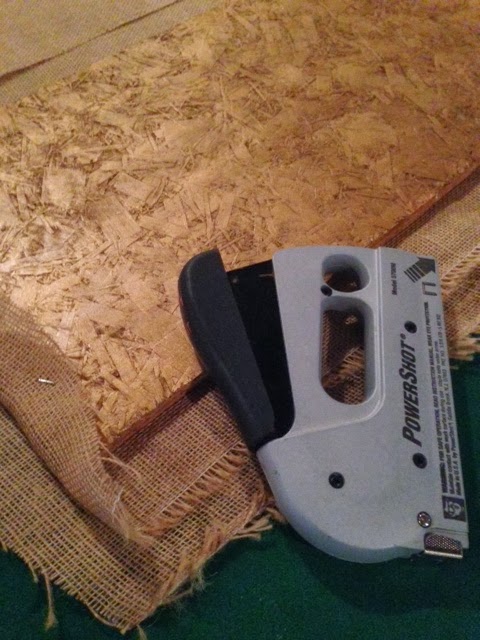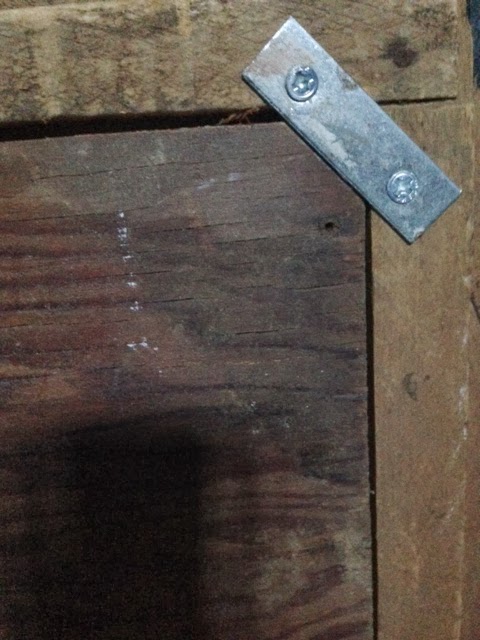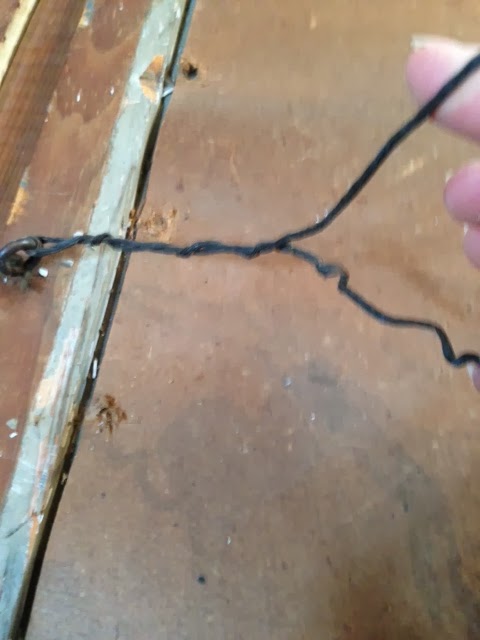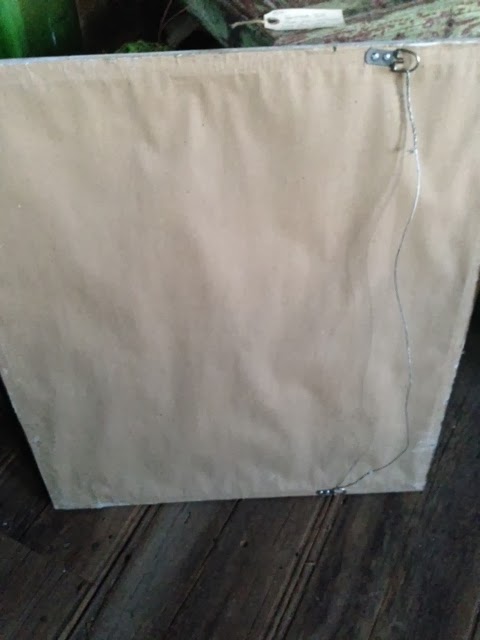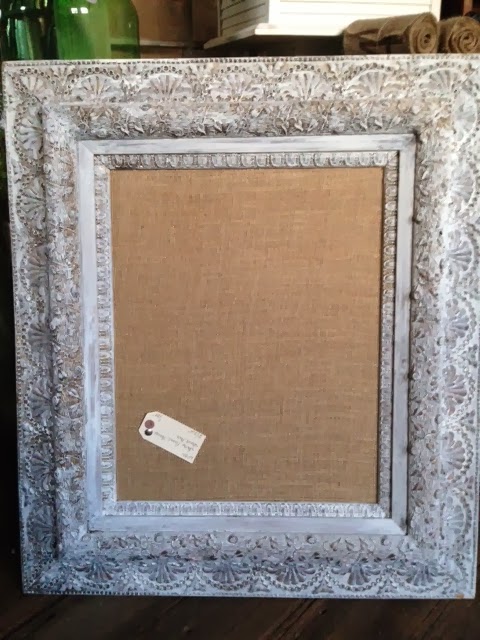As promised, here is a blog that shows you how to take those cast off frames that you find in antique stores, yard sales and in your grandmother’s attic and turn them into beautiful purposeful bulletin boards or chalk boards.
All of these frames are beautiful in their own right but ned some loving to bring them into present day.
This frame had an outdated color combo of white and gold accentuating the flourishes.
This frame had many nicks and dings along with peeling gold paint.
This frame was a heavy wood frame with gold embellishments that again dated it.
All of these frames were made into bulletin boards using the following instructions.
First you need to determine where the finished piece will be going and this will allow you to determine what color to paint it.
Once you decide what color you are painting it, I recommend that you take out any glass that might still be inside, matting boards or artwork so you are left with just the frame itself. If there is a heavier wood backing that was in the frame, do not discard it for you can glue the cork right to that piece of wood if it is in good shape and it is not warped.
This frame had the artwork and glass held in by tiny nails all around. I used a pair of pliers to get them out and then removed all of the old material.
If there is no heavier wood backing, than you will need to measure the opening of the frame and cut one yourself. If you are making a bulletin board you can use about a 1/4″ piece of plywood that does not have to be smooth. I do the cutting of the wood while waiting for the coats of paint to dry.
Step 1.
Clean off the frame with a damp cloth. If it is really dirty you can use a vinegar and water spray to clean. The cleaning will allow you to assess wether or not there are any repairs that you have to make before you paint.
Clean off the frame with a damp cloth. If it is really dirty you can use a vinegar and water spray to clean. The cleaning will allow you to assess wether or not there are any repairs that you have to make before you paint.
Step 2. Make any repairs with wood filler.
Chips like these can easily be covered up with paint. If you have big separations at the corners or holes in the filigree, you can use wood filler to seal or fill in. Let the wood filler dry before you begin to paint.
Step 3. Painting
There are two methods that I use to paint a frame depending on the look that I am trying to achieve.
Sometimes I use chalk paint which you do not have to prime with and sometimes I use just regular acrylic wall or trim paint in a low luster finish. (You can use a high gloss finish if you want something to really stand out and give it a lot of bling) When you use the chalk paint, there is no need to prime. When you use the wall paint you should prime first so the paint adheres better.
When using primer, sometimes I use nothing else on top if I want a” barely there” coat where the original or base finish shows through.
This is a shot of the above gold frame with just a light coat and then another coat of primer lightly brushed on. For this method, do not saturate the brush but brush much of the paint off before quickly brushing over the frame. I would finish this frame off with a coat of clear wax.
This frame has 2 coats of primer (dark wood frame) and then 2 coats of the Latex paint on top.
I felt this frame needed a little something more so I brushed a dark brown wax on top and then wiped it off quickly. I also sanded the edges a little to distress it lightly. This method gives it more depth. If you apply too much wax, no sweat, just take some steel wool and lightly sand over the areas you want to lighten. The waxing takes some practice if you are using a colored wax. Clear waxes are a little easier to use because you are not putting on pigment, it just deepens the color.
Finished painted frame.
Chalk Paint Method
I am sure you have heard of Annie Sloan, CC Cadwell and the likes for their lines of chalk paint. They are very easy to use for they do not need a primer and really do stick to most anything. The problem that I found with them is that I am often asked to do a board that matches a trim paint or a paint color that the customer loves. The shades of chalk paint I find limiting in this case, so I typically use the wall paint method that I described above. I have found this powdered version of chalk paint that you actually add to the latex paint that you are using and wala…it makes chalk paint. (I know, for those Pinterest fans, you can also make your own powder but for the time saved, these little pre made bags are quite economical)
Websters Chalk Paint Powder and all you need to mix it.
I turned this frame…
into this to match a clients room.
When using the chalk paint, you always finish with a clear coat or colored wax to protect the painted surface.
Step 4.
Cut the wood piece that the piece of cork will be glued to that fits into the back of the frame like the piece of glass would have. You need a circular saw or table saw for this to get clean edges. Make sure to fit the wood piece into the back of the frame BEFORE you glue the cork on, to make sure that it fits and it is not too tight. You can always trim it if you need to.
Step 5.
Now trace the piece of wood onto a large piece of cork. I purchase large rolls of cork from the website www.SCHOOLSin.com
You can also purchase small rolls of cork at your local craft store. Just make sure the width and length are enough to cover the area that you need.
Cut out the cork with a sharp scissors or place cork on a rubber mat or a large piece of thick cardboard to cut using a razor blade. Make sure that you are protecting your work surface!
Once the cork is cut, glue the cork to the wood piece that was cut prior with Liquid Nails. Make sure to get close to the edges and apply liberally. Press cork down into wood thoroughly and then put another piece of heavy wood or another heavy object on top until the glue dries. I typically leave it for a couple of hours and sometimes overnight. Once dry, trim any edges that are sticking out with a razor blade.
Step. 6
If you do not like the look of plain cork, you can cover the cork with a large piece of burlap. Lay the corked board on top of a smoothed out piece of burlap and use a staple gun to adhere it to the back of the board. Wrap it like a present but start at the top and work your way down. Make sure you check the front to make sure that it is pulled tight. Trim any large edges off but leave at least an inch or two around to make the stapling easy.
Step. 7
Insert the burlap (or plain) covered cork board into the frame and secure with framing brackets or any framing hardware that secures the whole piece in the frame.
Step. 8
Wire the frame to hang
Many of the frames often have old frayed wire on them that I like to replace with new wire. You can often use the old eye hooks but you might have to move them to get a more secure fit.
Optional Step 8.
To clean up the back of the frame and cover all of your work you can glue or staple brown craft paper to the edges of the frame to get a clean look.
Ta da…
The finished product all wrapped and ready to be gifted!
If gluing, sawing and painting is not your thing you can custom order ones through Life’s Patina or you can come visit us in the Spring to pick out one from the many that we will have constructed for the Spring Sale.
Either way…happy crafting!
Meg
